In a world full of quick health fixes, finding a real solution can seem really tough, especially if you’re constantly dealing with numbness, swelling, and dark circles under your eyes. These are common signs that your blood isn’t flowing right, which can make you feel not just physically tired, but down in the dumps too. You might have tried all sorts of things—medicines, changing what you eat, or different kinds of exercises—but nothing seems to really help. It’s super frustrating when nothing works the way you hope it would.
Here’s where yoga comes in. Yoga isn’t just a bunch of stretches; it’s a time-tested practice that looks after your whole self—body, mind, and spirit. This blog is all about how yoga for blood circulation could be the ray of hope you’ve been looking for if you feel like you’ve tried everything else. We’re going to dive into the real benefits of yoga, proven by science, and I’ll show you how to fit yoga smoothly into your life. Yoga is more than just moving around on a mat—it’s about connecting your mind, body, and spirit to boost your health and tackle those annoying symptoms of bad circulation. So, let’s start this adventure together and see how simple, thoughtful moves can breathe new life into your body and lift your spirits.
What is Blood Circulation and Why it Matters
To understand why improving blood circulation is so crucial, let’s start by exploring what it means. Blood circulation is the process by which your heart pumps blood throughout your body. This blood carries essential nutrients and oxygen to every cell, and removes waste products and carbon dioxide. Good circulation is fundamental to not just physical health but also to your vitality and energy levels. To learn more about how vital good circulation is and get more tips on improving it, read ‘How to Improve Blood Circulation in Your Body.
When circulation is poor, it can lead to various uncomfortable and sometimes concerning symptoms. You might experience numbness in your fingers and toes, swelling in your legs, or even dark circles under your eyes, which are often telltale signs that your blood isn’t flowing as well as it should. These symptoms can affect your daily life, making simple tasks more difficult and reducing your quality of life.
Moreover, good blood circulation impacts more than just your physical health; it influences your mental and emotional states as well. When your body is well-oxygenated and your nutrients are efficiently distributed, you’re more likely to feel energized and alert. Conversely, poor circulation can lead to fatigue, mood swings, and a decrease in cognitive function.
This is where yoga comes into play. Yoga is not just about bending and stretching; it’s about creating conditions within your body that optimize its functions. The various yoga poses help compress and decompress your body’s veins and arteries, improving the elasticity and facilitating better blood flow. This not only helps alleviate symptoms associated with poor circulation but also enhances your overall energy and vitality.
In the following sections, we’ll dive into how yoga specifically aids in improving circulation and which poses are most effective. We will also discuss simple routines you can incorporate into your daily life, regardless of your current fitness level or busy schedule. With yoga, you can take a proactive step towards not just managing symptoms, but improving your overall health and well-being.
Benefits of Yoga for Blood Circulation
Yoga not only promotes physical flexibility and mental calmness but also significantly enhances blood circulation. Each benefit of yoga is supported by scientific research, making it a compelling practice for those suffering from circulation issues. Here are key benefits of yoga for improving circulation, each supported by scientific findings:
- Enhances Heart Rate:
Regular yoga practice increases the heart rate, improving blood circulation and ensuring that cells receive more oxygen and nutrients. Studies suggest that yoga enhances cardiovascular responses similar to those observed during moderate-intensity exercises, which helps in improving blood flow and oxygenation throughout the body.
- Reduces Inflammation:
Yoga helps in reducing inflammation, which can lead to constricted vessels and impaired blood flow. Research has shown that yoga significantly lowers levels of inflammatory markers in the body, leading to improved vascular function and enhanced blood flow.
- Improves Vascular Health:
Yoga promotes the strength and flexibility of blood vessels, thereby enhancing cardiovascular health and improving circulation. A study found that yoga interventions improved vascular health and suggested yoga as a therapeutic means to enhance cardiovascular health and reduce disease risk.
- Promotes Relaxation and Reduces Stress:
The relaxation induced by yoga reduces stress, which can otherwise tighten the cardiovascular system and impede blood flow. Studies suggest that yoga practices are known to lower cortisol levels, a stress hormone, which helps in promoting better circulation and reducing the strain on the cardiovascular system.
- Aids in Detoxification:
Specific yoga poses support the body’s natural detoxification processes, improving blood quality and circulation, which in turn supports healthier organ function and enhances skin health. Yoga techniques involving body twists and compressive movements stimulate internal organs and facilitate detoxification, thereby improving overall circulation and health.
Best Yoga Poses for Improving Circulation
Enhancing blood circulation through yoga involves specific poses that increase blood flow, alleviate inflammation, and support overall vascular health. Here are some effective yoga poses, with step-by-step instructions provided in a clear, bullet-point format:
1. Downward-Facing Dog (Adho Mukha Svanasana)
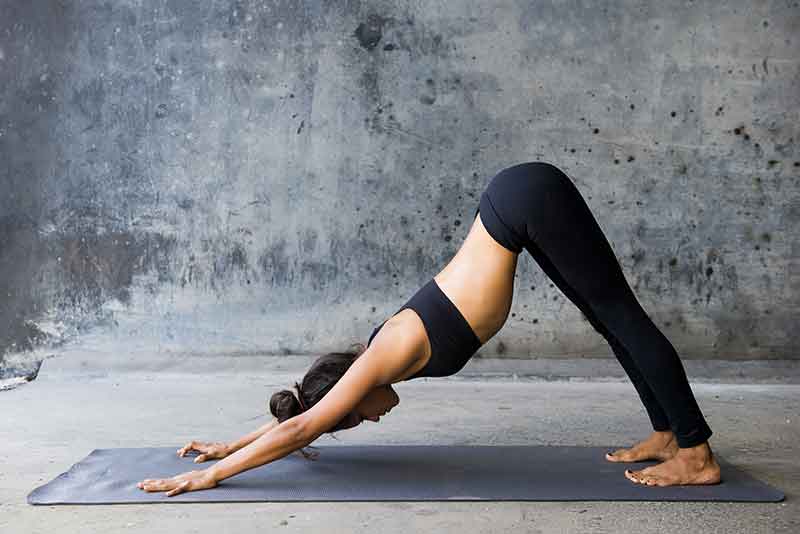
- How to Do It:
- Start on your hands and knees with your wrists under your shoulders and knees under your hips.
- Press into your hands, tuck your toes under, lift your knees off the floor, and raise your hips toward the ceiling.
- Straighten your legs and press your heels toward the floor as you form an inverted V shape.
- Hold the position for one to three minutes.
- Benefits: This pose reverses the blood flow towards the heart, aiding in better circulation, and also strengthens your core and limbs.
2. Legs Up the Wall (Viparita Karani)
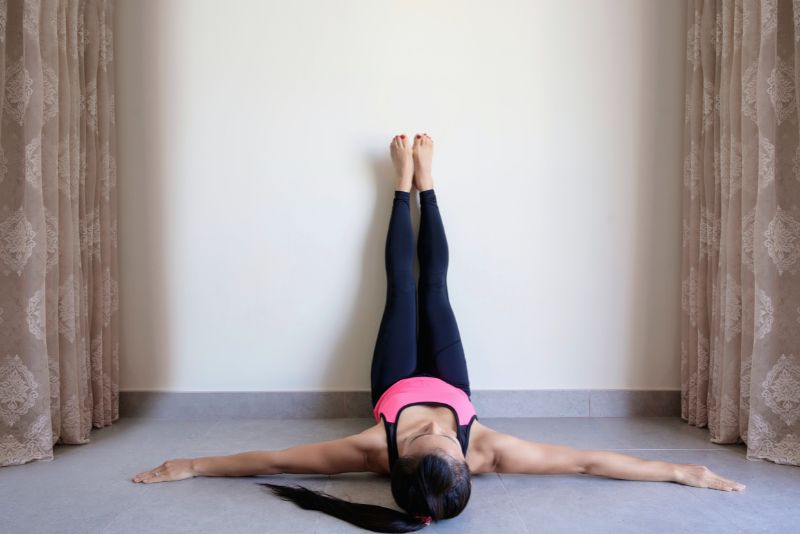
- How to Do It:
- Sit with one side of your body against a wall.
- Gently turn to lay on your back and swing your legs up against the wall.
- Your body should form an L shape with the back flat on the ground and legs extended vertically up the wall.
- Hold this position for 5 to 15 minutes.
- Benefits: Excellent for relieving tired legs and feet, this pose aids venous drainage and blood flow back to the heart.
3. Camel Pose (Ustrasana)
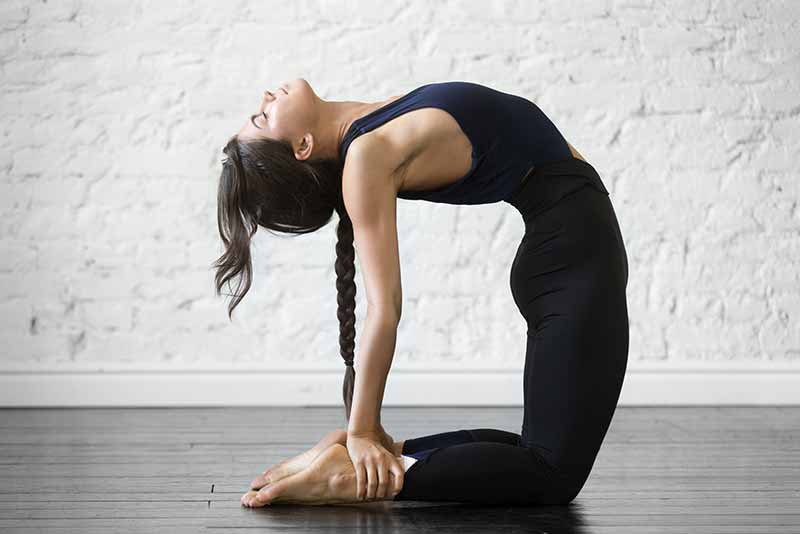
- How to Do It:
- Kneel on the floor with knees hip-width apart.
- Place hands on the back of your hips with fingers pointing downward.
- Arch back and slowly reach for your heels with your hands while pushing your hips forward.
- Keep your neck in a neutral position or drop it back, but do not strain.
- Hold for 30 seconds to one minute.
- Benefits: Opens up the chest and improves respiratory capacity, which boosts blood circulation.
4. Bridge Pose (Setu Bandhasana)
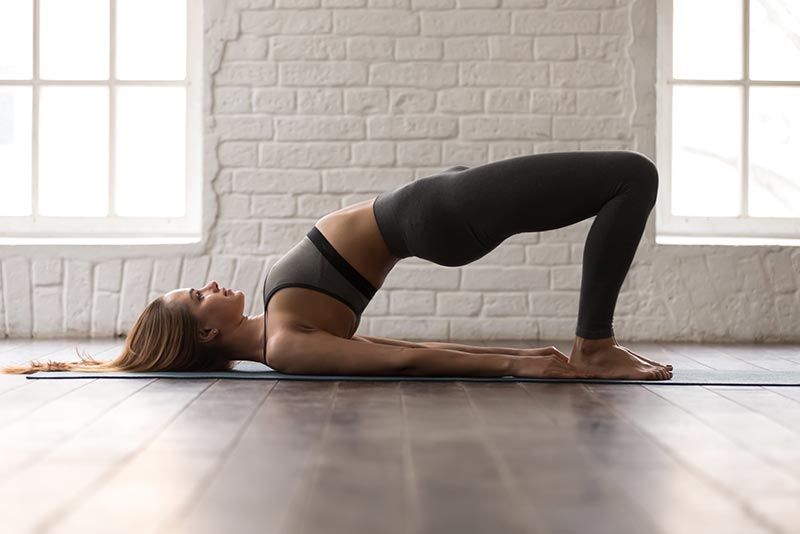
- How to Do It:
- Lie on your back with knees bent and feet flat on the floor, hip-width apart.
- Place your arms at your sides, palms down.
- Lift your hips towards the ceiling while pressing your feet and arms firmly into the ground.
- Keep your neck and spine in a neutral position; do not overarch.
- Hold for 30 seconds to one minute.
- Benefits: Stimulates abdominal organs and thyroid glands, improving digestion and metabolism crucial for blood flow and health.
5. Warrior II (Virabhadrasana II)
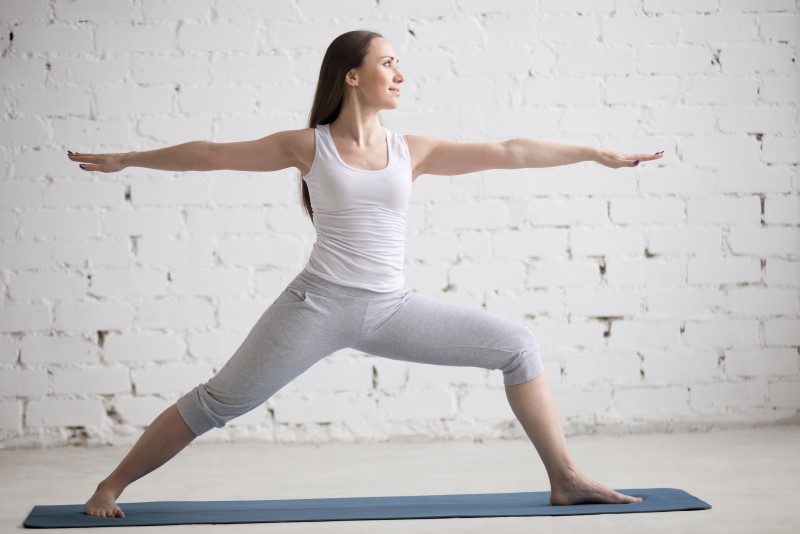
- How to Do It:
- Stand with legs 3 to 4 feet apart, turning your right foot out 90 degrees and left foot in slightly.
- Extend your arms to the sides at shoulder height.
- Bend your right knee over your right ankle, turning your head to gaze over your right hand.
- Keep your torso perpendicular to the floor.
- Hold for 30 seconds to a minute, then switch sides.
- Benefits: Increases stamina and balance, enhancing blood flow in the lower limbs while strengthening the hips and core.
6. Fish Pose (Matsyasana)
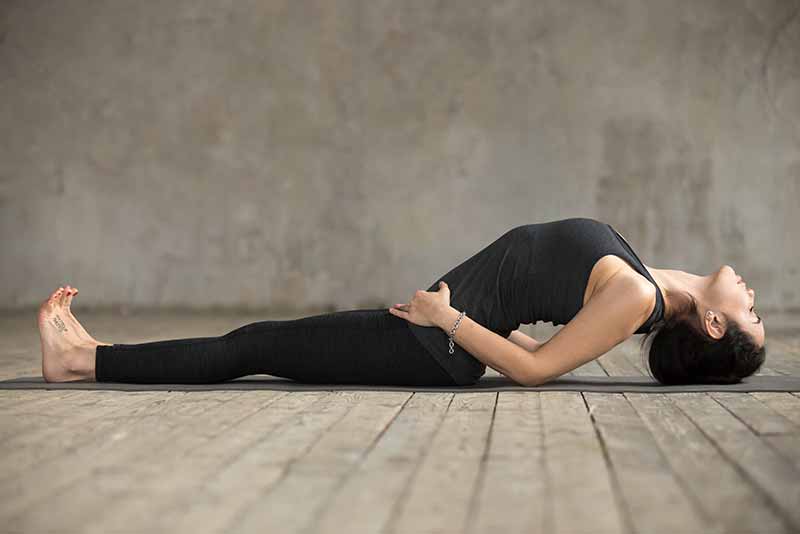
- How to Do It:
- Lie on your back with legs extended and arms resting alongside your body.
- Lift your upper body off the floor by pressing your forearms and elbows into the ground.
- Arch your back and tilt your head back, touching the top of your head to the floor.
- Ensure your weight is supported by your forearms and not on your head.
- Hold for 15 to 30 seconds.
- Benefits: Opens up the chest and throat, improving respiratory functions and facilitating better circulation in the upper body.
7. Standing Forward Bend (Uttanasana)
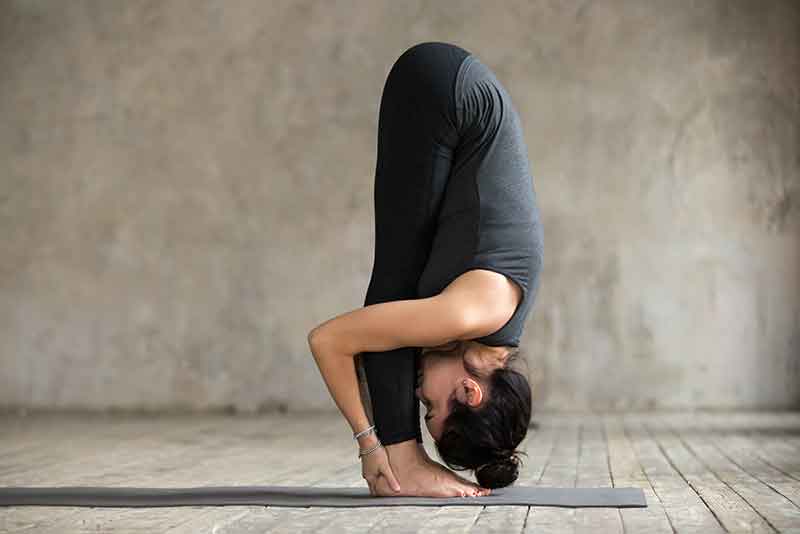
- How to Do It:
- Stand straight with feet hip-width apart and arms at your sides.
- Inhale deeply, and as you exhale, hinge at your hips to bend forward.
- Allow your hands to touch the floor or grasp your elbows with opposite hands.
- Keep your knees soft to avoid strain on the back. Let your head hang freely.
- Hold for 30 seconds to 1 minute, gently swaying to release tension.
- Benefits: This pose helps reverse the blood flow towards the head and upper body, relieving stress and improving circulation. It also stretches the hamstrings and calves.
8. Triangle Pose (Trikonasana)
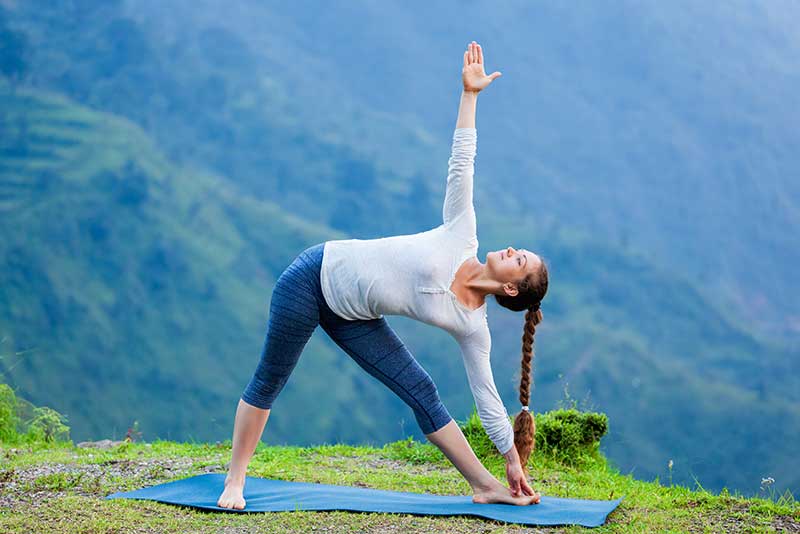
- How to Do It:
- Stand with your feet wide apart. Turn your right foot out 90 degrees and your left foot in about 45 degrees.
- Extend your arms to the sides, parallel to the ground.
- Bend from your hip to the right, extending your arm and touching your right leg with your right hand. Extend your left arm vertically.
- Turn your gaze to look up at your left hand.
- Hold for 30 seconds to 1 minute, then switch sides.
- Benefits: Triangle Pose stretches and opens the muscles of the leg, groin, and hip, which can help enhance blood flow in these areas. It also improves balance and stability.
9. Chair Pose (Utkatasana)
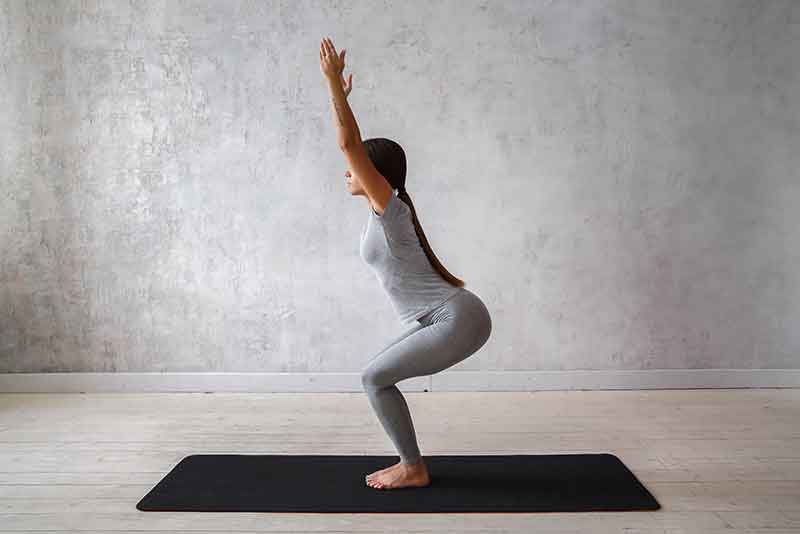
- How to Do It:
- Stand with your feet together or hip-width apart.
- Inhale and raise your arms above your head.
- Exhale and bend your knees, as if sitting back into a chair. Try to keep your thighs as parallel to the floor as possible.
- Keep your back slightly arched and chest lifted. Hold for 30 seconds to 1 minute.
- Benefits: Chair Pose stimulates the heart and causes it to pump more blood. It strengthens the lower legs and helps in the circulation of blood and other fluids.
10. Eagle Pose (Garudasana)
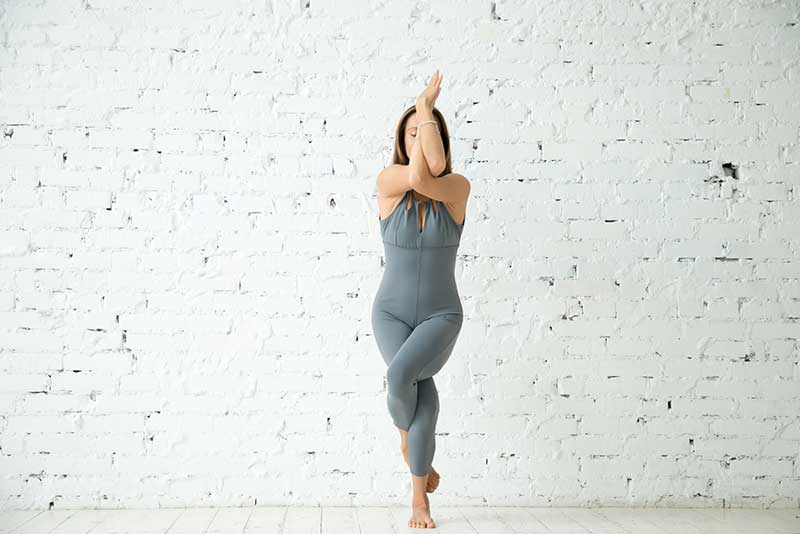
- How to Do It:
- Begin standing straight. Bend your knees slightly, lift your left foot up and, balancing on your right foot, cross your left thigh over your right.
- Hook the top of your left foot behind your right calf.
- Extend your arms straight in front of your body, then cross them over each other at the elbow, with the right arm above the left.
- Bend your elbows and raise your forearms perpendicular to the floor. Wrap your arms and hands, pressing your palms together.
- Hold the pose for 15 to 30 seconds, focusing on balance and breathing, then switch sides.
- Benefits: Eagle Pose is excellent for improving balance and concentration. It also enhances circulation in the legs by squeezing blood out of the calves and thighs when in the pose and allowing fresh blood to flow upon release.
These poses, when integrated into a regular yoga practice, can significantly improve blood circulation, reduce inflammation, and help mitigate symptoms like numbness and swelling. Always perform these poses within your comfort level and make necessary adjustments to accommodate your fitness level. For a guided practice that focuses specifically on improving circulation, check out this helpful Yoga Session on YouTube, designed to boost blood flow throughout the body.
Yoga Routines to Try at Home
Integrating yoga into your daily life doesn’t require extensive sessions. Here are simple routines that can be done at home to improve blood circulation and overall health:
Morning Routine (15 minutes)
- 3 minutes of Downward-Facing Dog to awaken and energize the body.
- 3 minutes of Warrior II (1.5 minutes each side) to enhance lower body circulation.
- 3 minutes of Triangle Pose (1.5 minutes each side) to stretch and open the sides of the body.
- 6 minutes of Legs Up the Wall to relax and reverse blood flow.
Evening Routine (20 minutes)
- 5 minutes of Chair Pose to stimulate the legs and core after a day of sitting.
- 5 minutes of Bridge Pose to calm the mind and improve digestion.
- 5 minutes of Camel Pose to open up the chest and improve respiratory capacity.
- 5 minutes of Fish Pose to release tension in the neck and shoulders and enhance upper body circulation.
If you’re new to yoga, this Beginner’s Yoga Video is a fantastic resource to help you get started with basic poses at home.
Lifestyle Changes to Enhance Blood Circulation
Beyond yoga, certain lifestyle adjustments can significantly improve your circulation:
- Stay Hydrated: Drinking plenty of water is essential for maintaining the volume of blood and preventing blood from thickening, which can impede circulation.
- Maintain a Balanced Diet: Eating foods rich in iron, omega-3 fatty acids, and fiber can help improve blood quality and circulation. Include leafy greens, nuts, seeds, and plant-based sources of omega-3s such as flaxseeds and chia seeds in your diet. Diet plays a crucial role in blood circulation. For nutritious recipes that promote better health, visit the Yuvaap Kitchen on YouTube.
- Regular Exercise: Along with yoga, engaging in regular cardiovascular activities like walking, cycling, or swimming can boost heart health and circulation. Along with yoga, consider adding a daily walk to your routine. Discover the ‘Ten Health Benefits of a 30-Minute Walk Every Day‘ to understand how walking can complement your yoga practice in boosting circulation.
- Limit Salt Intake: Excessive salt can lead to hypertension, which negatively affects circulation. Reducing salt can help manage blood pressure and improve heart health.
- Quit Smoking: Smoking contributes to the buildup of plaque in the arteries, reducing blood flow. Quitting smoking can dramatically improve circulation and overall health.
Embarking on a journey to improve blood circulation through yoga and lifestyle changes is not just about alleviating symptoms like numbness, swelling, or dark circles. It’s about embracing a holistic approach to health that enriches your life both physically and emotionally. By incorporating the simple yoga routines outlined above into your daily routine and making mindful lifestyle adjustments, you can enjoy enhanced vitality and well-being. Remember, the key to successful health improvements is consistency. Stick with it, and over time, you’ll likely see significant benefits that extend beyond improved circulation to a more vibrant and energetic life.
FAQs

Mr. Vijay Kumar Pandey is an eminent Yoga teacher with 15 years of experience. He excelled himself in Iyengar Yoga under the guidance of revered master BKS Iyengar Read More



